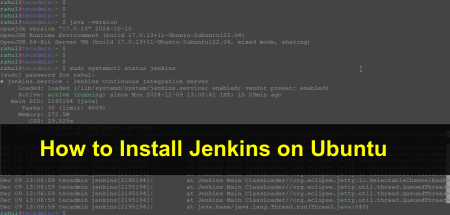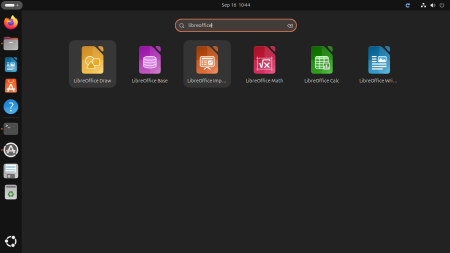Wkhtmltoimage is a very useful application to create screenshots of a website or webpage. Sometimes we are required to create a screenshot of web pages and store in our system. It uses QT Webkit rendering engine for creating images in various formats. This article will help to capture screenshots of a webpage using PHP script and Linux command line.
Step 1: Install wkhtmltoimage
Visit the wkhtmltopdf.org and install and download the package for your Linux system. Then install it using the standard package manager. For example, to download and install the package on Ubuntu 22.04, execute:
wget https://github.com/wkhtmltopdf/packaging/releases/download/0.12.6.1-2/wkhtmltox_0.12.6.1-2.jammy_amd64.debsudo apt install -f ./wkhtmltox_0.12.6.1-2.jammy_amd64.deb
Step 2: Capture Screenshot Using Command Line
First, check wkhtmltoimage script using the Linux command line. The following command will take a screenshot of http://google.com and create an image with the name google.jpg.
wkhtmltoimage --no-images --load-error-handling ignore http://google.com google.jpg
Step 3: PHP Code to Create Image
Use the following PHP code to generate images from the website URL. This script required to be enabled the shell_exec function for Apache. Most shared hosting providers don’t allow this function.
Create a file name getImage.php and put below code:
1 2 3 4 5 6 7 8 9 | <?php $url = $_GET['url']; // Website URL to Create Image $name = $_GET['img']; // Output Image Name $command = "/usr/bin/wkhtmltoimage --no-images --load-error-handling ignore"; $dir_img = "/var/www/html/images/"; // Image files will be saved here $ex_cmd = "$command $url " . $dir_img . $name; $output = shell_exec($ex_cmd); ?> |
Use the following syntax or demo URL to generate an image of the website.
Example:
https://example.net/getImage.php?url=http://google.com&img=image1.jpg
Step 4: PHP Script for SEO Friendly URL
If you want to create SEO friendly URL for this setup, you can use the below steps.
Create a few required directories in your web server document root
mkdir -p /var/www/html/getImage/images/
Create index.php file with the following content. Make sure all directory paths are correct,
1 2 3 4 5 6 7 8 9 10 11 12 13 14 15 | <?php $url = str_replace('index.php','', $_SERVER['PHP_SELF']); $url = str_replace($url,'',$_SERVER['REQUEST_URI']); $url = explode('/',$url); $name = array_shift($url); $weburl = array_shift($url); $command = "/usr/bin/wkhtmltoimage --no-images --load-error-handling ignore"; $dir_img = "/var/www/html/getImage/images/"; // Image files will be saved here $ex_cmd = "$command $weburl " . $dir_img . $name; $output = shell_exec($ex_cmd); echo "<img src="/getImage/images/$name>"; // comment this to disable image show on page ?> |
Now create a .htaccess file in this directory to move all requests to the index.php file. make sure your server is enabled to use the .htaccess file.
vi /var/www/html/getImage/.htaccess
Add the following content to the file:
RewriteEngine On Save the file and close it. Now you can create images by accessing the URL below: Syntax: Example:
RewriteCond %{REQUEST_URI} /images/.+(gif|png|jpg)$
RewriteRule .* – [L]
RewriteRule ^.*$ index.php http://youdomain.com/getImage/[imagename]/[site url without http prefix]
https://tecadmin.net/getImage/123.jpg/yahoo.com




7 Comments
Very nice post. I just stumbled upon your weblog and wished to say
that I have truly enjoyed browsing your blog posts.
After all I will be subscribing to your feed and I hope you
write again soon!
You are a very bright individual!
Really php is a allrounder language.
Hi, great article although if you don’t want to worry about scalability and managing your own service you could use a free third-party service. Like GrabzIt’s PHP API: http://grabz.it/api/php/
Hello again!
Thank you for fast answers!
This updated steps helped me yes but there is one thing.
If you want to run this the link from another website so I would do this:
in my case:
<img src="/getimages/.jpg/” />
I get error on the main site and it’s look like I am loading image that dosen’t exists.
So is there any change to make the url http://thedomain.com/getimages/somedomain.com.jpg/somedomain.com be an image, not php file.
Like this:
s.wordpress.com/mshots/v1/http://google.com <– You cannot veiw the source cause it's image 🙂
Regards
Hello.
Thx for this advise.
is there any possible way to let the script work that like this one:
s.wordpress.com/mshots/v1/http://google.com
I could use it like this in your way with mydomain.com/getImage.php?url=http://$getDomain&img=$getDomain
but if I do this way then the image will now show on that url, I would like to make the url (the image) like the s.wordpress.com does.
Thanks
Hi Omar,
We have updated the article, and added Step #4, I hope that will fulfill your requirement.
Also there are little changes in Step 1, to download latest binaries.